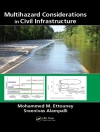Farm dams, creeklines, vegetation and rocky outcrops are natural assets that are essential for healthy, sustainable farms. Protecting and enhancing these elements of natural capital on farms not only supports biodiversity, but also contributes to farm productivity and to the well-being of farmers and farming communities.
Natural Asset Farming: Creating Productive and Biodiverse Farms reveals seven key natural assets and why they are so valuable for biodiversity and productivity on farms. Drawing on two decades of long-term ecological monitoring and knowledge exchange with farmers, Landcare groups and natural resource management experts, this book is a tool for building and enhancing natural assets in agricultural landscapes. In bringing together ecological science and the experience of farmers in the wheat–sheep belt of south-eastern Australia, Natural Asset Farming will help foster ideas, boost resilience and improve the sustainability of agricultural production.
Innehållsförteckning
About the authors
List of contributors
Acknowledgements
Introduction: Natural asset management on farms
Chapter 1: Planning changes that make a difference
Chapter 2: Enhance farm dams
Chapter 3: Establish shelterbelts and other plantings
Chapter 4: Protect remnant woodland
Chapter 5: Protect creeks, wetlands and riparian zones
Chapter 6: Protect paddock trees and grow new ones
Chapter 7: Maintain native perennial grasses
Chapter 8: Protect rocky outcrops
Chapter 9: Manage feral animals and overabundant native species
Chapter 10: Planning work to improve the natural assets on a farm
Appendix A: Plant lists for farm dam revegetation
Appendix B: Plant lists for supporting pollinators on farms
Index
Om författaren
Michelle L. Young is Sustainable Farms’ Project Director, and is a social scientist who has worked on a range of research and evaluation projects in agriculture, the environment and public health. Her experience includes undertaking the evaluation of the social and economic impacts of the Murray Darling Basin Plan, supply chain studies looking at grain storage and kangaroo meat. Michelle also led several studies documenting the effectiveness of health promotion interventions in a range of settings, including maternal health, mental health and accident prevention.












